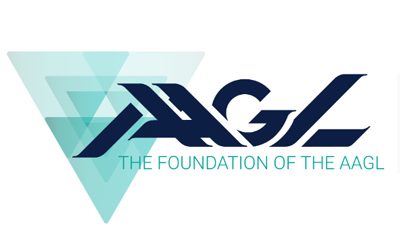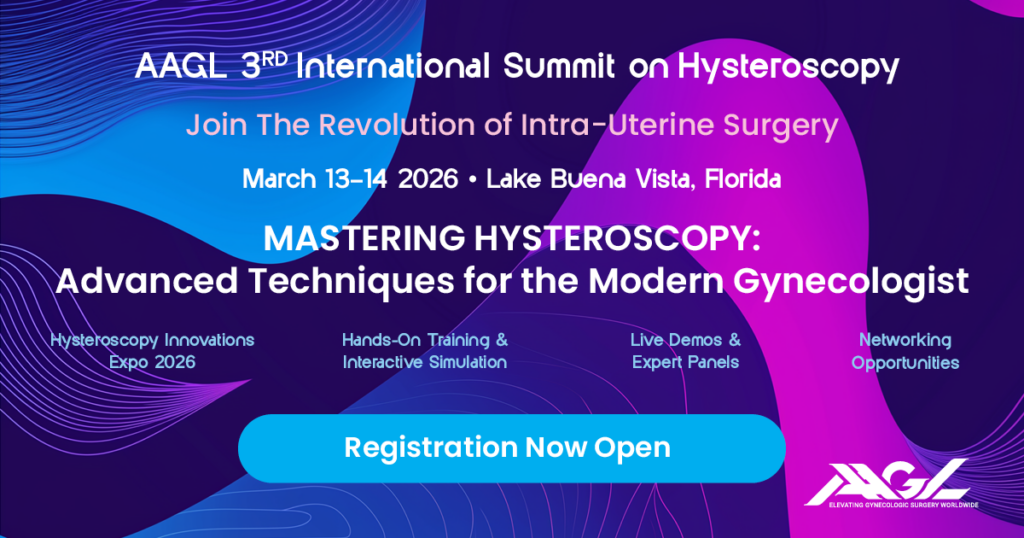Chronic Pelvic Pain: Closing the Gap Between What is Learned and What is Practiced
 “Education is the most powerful weapon which you can use to change the world.”
“Education is the most powerful weapon which you can use to change the world.”
Nelson Mandela (1918-2013)
Chronic Pelvic Pain (CPP) is a condition that inevitably, as a minimally invasive gynecologic surgeon (MIGS), you will have to face at some point in your career. Almost 23 million of women in the US suffer from CPP; it accounts for almost 10% of outpatient gynecologic consults. Nearly 58,000 hysterectomies are performed annually due to this condition. The economic burden on the US healthcare system is estimated at 2 billion dollars annually.1–3 Identifying patients with this condition and assessing them for all the potential co-morbidities is crucial to provide proper and timely therapeutic options. A biopsychosocial approach and an interdisciplinary treatment approach4–6 is needed to identify all potential sources of pain, not only the surgical ones, including the underrecognized Central Sensitization.7,8 In addition, patient expectations must be considered. It has been reported that patients with CPP expect to be addressed by supportive nurses and providers, to have their pain be taken seriously, to receive an explanation for the pain, to be reassured that CPP is not “all in” their “mind”, that the pain is common and that it is not cancer. 9
At last year’s Pelvic Pain SIG communication, we discussed bringing more CPP education to our residents, MIGS fellows and general healthcare providers10 who are challenged by lack of interdisciplinary resources, time constraints, and the complexities of the patient’s symptoms and emotional needs. Although provider knowledge about CPP is improving, there is still a gap between what is being taught and what is done in clinical settings. Pain educators are tasked with not only teaching chronic pain concepts but also facilitating their applicability. To close the gap between learning and practice, educators need to use more contemporary educational strategies, such as team or problem-based learning sessions, clinical case discussions, interactive sessions, quizzing, online courses; strategies that might help close this gap from the educational perspective and provide long lasting change in behavior and retention.11,12
To encourage gynecologists to learn about CPP, many resources are available and supported by important organizations such as the International Pelvic Pain Society (IPPS) and the American Association of Gynecologic Laparoscopists (AAGL). In October 2018, the IPPS hosted their Annual Meeting in Chicago, and featured a Foundations Course, an innovative interactive session on CPP that allowed providers to learn through didactic, case-based and hands-on interactions. The IPPS also conducted laparoscopic and a gross anatomy cadaveric session focusing on pelvic pain (program available at www.pelvicpain.org). At this year’s AAGL annual meeting in Las Vegas there was a Postgraduate Course on CPP and round table luncheons with CPP experts. Lastly, the IPPS, in collaboration with the AAGL, is developing a new formative online curriculum to teach CPP.
Through these types of educational collaboratives, we will continue focusing on CPP education and make durable changes in healthcare delivery that will impact patient’s lives. Although we already face many challenges when treating CPP patients, continued education and better educational resources will help us overcome some of these obstacles. I am looking forward to seeing you at our CPP teaching events.
References:
- Zondervan K, Barlow DH. Epidemiology of chronic pelvic pain. Baillieres Clin Obs Gynaecol. 2000. doi:10.1053/beog.1999.0083.
- Yunker A, Sathe NA, Reynolds WS, Likis FE, Andrews J. Systematic Review of Therapies for Noncyclic Chronic Pelvic Pain in Women. Obstet Gynecol Surv. 2012. doi:10.1097/OGX.0b013e31825cecb3.
- L.M. S, S. M, T. E. Chronic pelvic pain in women: an epidemiological perspective. Am Fam Physician. 2016;93(5):380-387. http://www.embase.com/search/results?subaction=viewrecord&from=export&id=L608744493.
- Nancarrow S a, Booth A, Ariss S, Smith T, Enderby P, Roots A. Ten principles of good interdisciplinary team work. Hum Resour Health. 2013;11(1):19. doi:10.1186/1478-4491-11-19.
- Choi, B, Pak A. Multidisciplinarity, inter-disciplinarity and trans-disciplinarity in health research. Clin Investig Med. 2006. doi:10.1002/eji.201090065.
- Gatchel RJ, McGeary DD, McGeary CA, Lippe B. Interdisciplinary chronic pain management: past, present, and future. Am Psychol. 2014. doi:10.1037/a0035514.
- Woolf CJ. Central sensitization: Implications for the diagnosis and treatment of pain. Pain. 2011;152(SUPPL.3). doi:10.1016/j.pain.2010.09.030.
- Levesque A, Riant T, Ploteau S, et al. Clinical Criteria of Central Sensitization in Chronic Pelvic and Perineal Pain (Convergences PP Criteria): Elaboration of a Clinical Evaluation Tool Based on Formal Expert Consensus. Pain Med. 2018;(April):1-7. doi:10.1093/pm/pny030.
- Price J, Farmer G, Harris J, Hope T, Kennedy S, Mayou R. Attitudes of women with chronic pelvic pain to the gynaecological consultation: A qualitative study. BJOG An Int J Obstet Gynaecol. 2006. doi:10.1111/j.1471-0528.2006.00862.x.
- Dassel M. Chronic Pelvic Pain Education— Where Are You? https://www.aagl.org/wp-content/uploads/2017/10/NewsScope_JUL-SEP-2017.pdf. Published 2017. Accessed June 9, 2018.
- Pluta WJ, Richards BF, Mutnick A. PBL and Beyond: Trends in Collaborative Learning. Teach Learn Med. 2013;25(SUPPL.1):37-41. doi:10.1080/10401334.2013.842917.
- Dewey CM, Turner TL, Perkowski L, et al. Twelve tips for developing, implementing, and sustaining medical education fellowship programs: Building on new trends and solid foundations. Med Teach. 2016;38(2):141-149. doi:10.3109/0142159X.2015.1056518.






